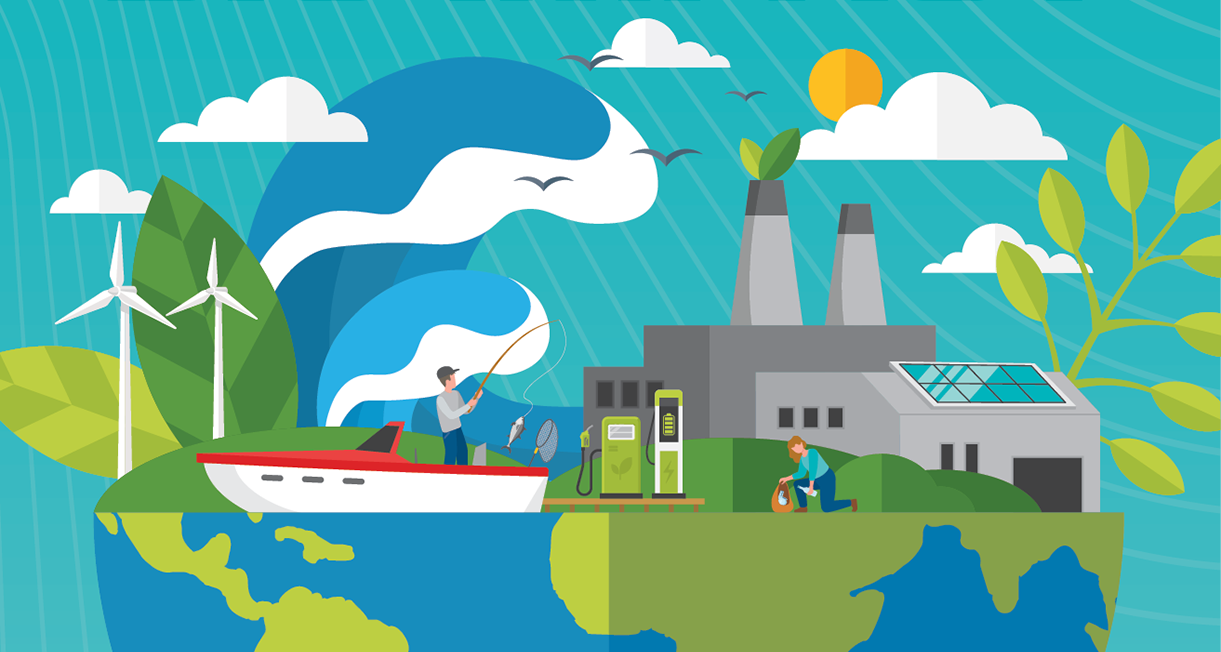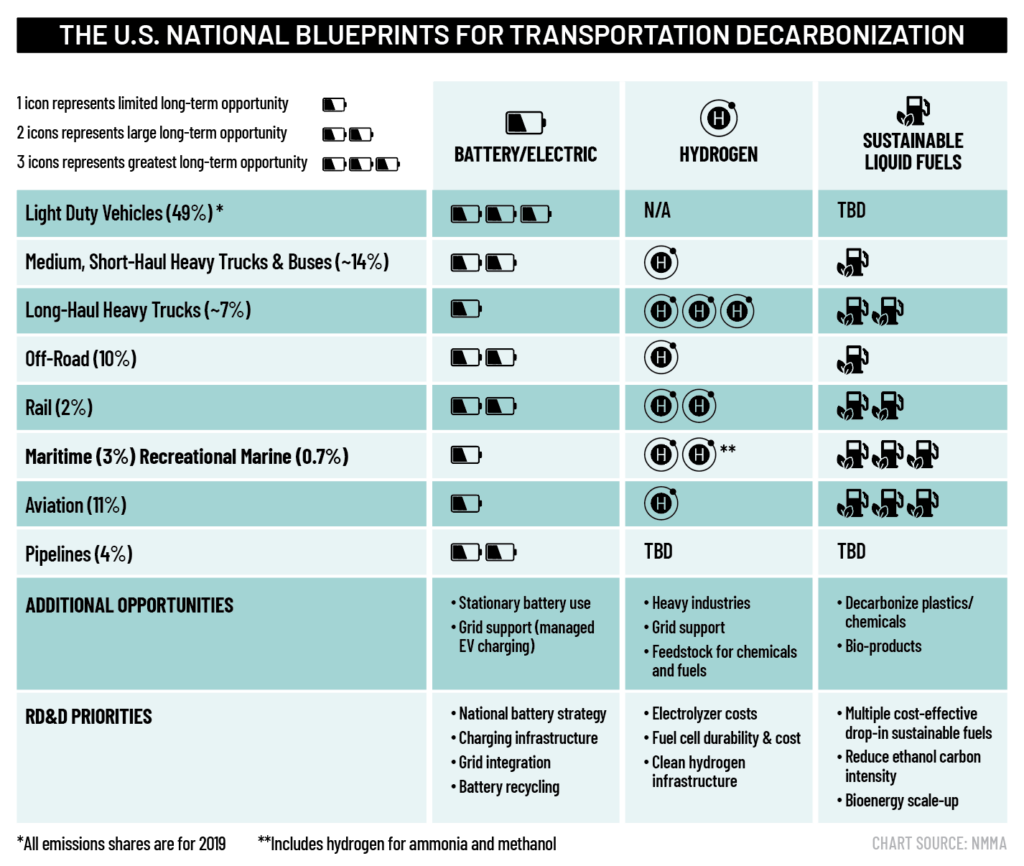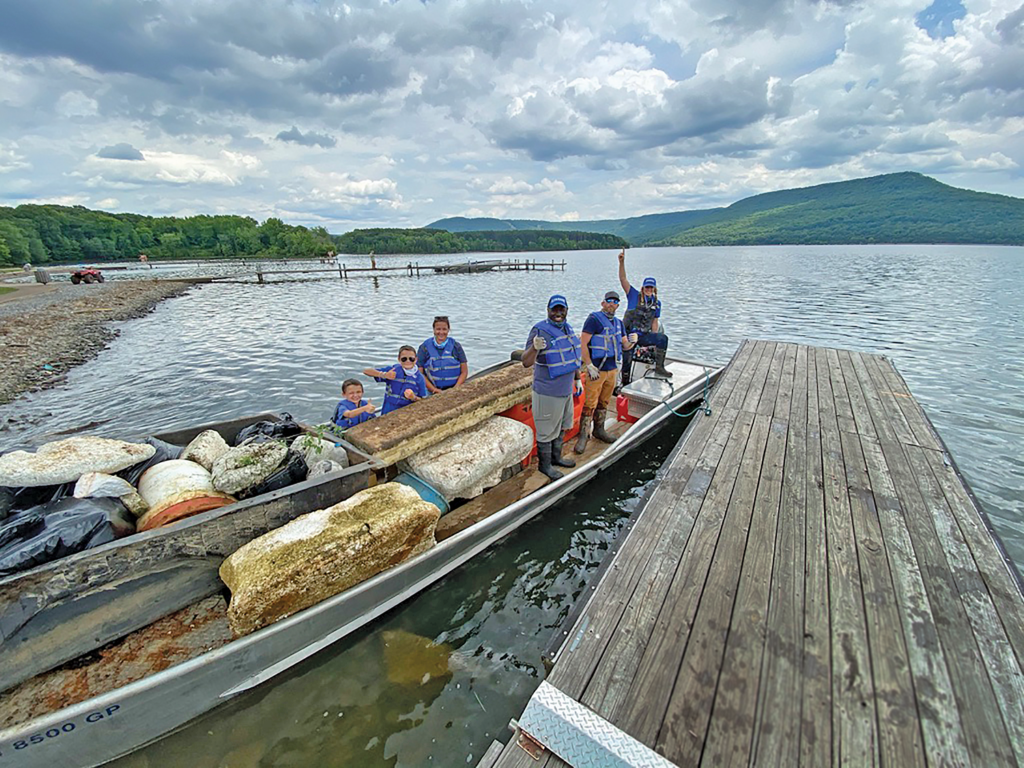Sustainability: Small steps, big impact

By Adam Quandt
Sustainability has become quite the buzz word in today’s world – both in the recreational boating industry and well beyond. The topic of sustainability and the notion of embracing sustainability is wide-reaching and often tough to narrow down.
Over the last few years, the recreational boating industry has certainly seen an increasing spotlight on sustainability with new team members or departments being created, new manufacturing methods and beyond.
“There’s no standard definition for sustainability. That’s the challenge for any organization,” said Jennifer Koenig, chief sustainability officer at Brunswick Corporation. “For us, the important thing is to understand where we make the biggest impact and what is most important to our stakeholders and how we can contribute to preserving our waterways.”
Sustainability in manufacturing
When sustainability comes to mind in the boating landscape, many people immediately focus on the end product and user or working toward alternative propulsion types. And while these certainly make up a part of sustainability, they are but a small portion of the focus in the recreational boating industry.
“Our philosophy is that sustainability is an integrated part of the business, not a separate function,” Koenig said. “By enabling sustainable functions across all of our teams, it leads to an overall sustainable operation company-wide.”
Across the industry, manufacturers are taking in-depth looks at their production lines, suppliers and everything in between, and implementing a variety of new procedures, materials and more to make their operations more sustainable and environmentally-friendly.
“There’s a ton more to sustainability than just what comes out of a tailpipe or lack thereof – everything from production to suppliers to manufacturing, there are so many ways you can minimize CO2 emissions aside from the product use itself,” NMMA’s director of environment, health and safety compliance Jeff Wasil told Boating Industry.
Many manufacturers across the recreational boating industry – both large and small alike – are implementing and working toward a variety of sustainability-focused goals.
In its 2022 Sustainability Report – released in May 2023 – Brunswick Corp. announced a 13% reduction in Scope 1 and Scope 2 greenhouse gas emissions instensity and established a strategic framework to include a 30% reduction target for Scope 1&2 emissions by 2025.
Similarly, roughly one year ago, Yamaha Motor Corporation – not just marine – announced it has its sights set on making its manufacturing processes within Scope 1 and Scope 2 completely carbon neutral by 2035.
“The efforts we made within the last year are laying the groundwork for the future, ensuring the next generation can continue to enjoy healthy, thriving waterways and fisheries,” said Martin Peters, Director, External Affairs, Yamaha U.S. Marine Business Unit. “There’s still much to be done, and we remain steadfast in our efforts toward carbon neutrality, conservation and sustainability, all of which remain at the heart of every Yamaha Rightwaters initiative.”
Earlier this year, Groupe Beneteau announced a ramp up of its focus on sustainability on the purchasing side of its CSR (Corporate Social Responsibility) program, B-Sustainable by inviting its suppliers to register on the EcoVadis CSR rating platform. Groupe Beneteau set a target to have 50% of its supplier to be covered by the assessment approach by the end of 2025.
Within the program, Groupe Beneteau will assess the CSR performance of its suppliers. This assessment covers 21 sustainability criteria that are grouped into four themes: Environment, Labor & Human Rights, Ethics and Sustainable Procurement. The criteria are weighted depending on the size, business sector and geography of the company being assessed.
“This initiative represents a major step forward with our commitment to incorporating sustainability criteria across our entire supply chain”, explains Delphine Planes, Groupe Beneteau VP Purchasing. “We are proud to work with suppliers who share our commitment. We are convinced that this initiative will help further strengthen our supply chain and maintain the confidence and trust of our customers and partners.”
And while major goals like total carbon neutrality are huge for not only the industry, but the environment all around, it doesn’t happen overnight, nor with one swift action.
“People that are new to thinking about operating sustainably, often think about it as an overwhelming task, but there is so much that can be tackled in a ‘small step’ way,” Koenig said. “Just start small, take a broad look at your operation, pick one area in sustainability and drive your focus into that. Once that is rolling, move onto the next small step.”
Koenig explained that Brunswick’s philosophy is that sustainability is an integrated part of the business, rather than a separate function. And by enabling sustainable functions across all of the teams across Brunswick, it leads to an overall sustainable operation company wide.
“A lot of people want to think so big, but it’s the little things you do that will make the biggest impact overall,” NMMA’s Wasil added. “Don’t focus on trying to change something so massively overnight. Look at your production process and find ways to minimize small things like cardboard and plastic use or other things along those lines and look for solutions. If we all do those things together as an industry, it will make a huge impact.”
Moving beyond electric
While the push to explore electric power sources has been a high focus across not just the recreational marine industry, but many around it, the marine industry is exploring a variety of other sustainable sources to better boating’s environmental impact.
But before we dive into those new efforts across the industry, it’s important to set the stage for boating’s current impact.
At this point in time, recreational marine accounts for 0.7% of all transportation CO2 emissions. And in addition to that, boating accounts for just ½ of 1% of gasoline use in the United States.
“Just because our impact numbers are small as an industry and recreation activity, we still need to do our part and work toward sustainable solutions,” NMMA’s Wasil told Boating Industry.
Another important note is that there are roughly 12 million registered powerboats in the U.S. right now. And compared to the automotive lifespan, boats have a very long, useful life, with very low hours used per year.
Yamaha’s Martin Peters indicated that the replacement rate for boats is about 2% per year and the replacement rate for automobiles is about 20%. “If we electrify every single thing – which isn’t feasible, but let’s say we did – and we were to sell nothing but electrified products, it would still take more than 40 years to achieve carbon neutrality for the recreational fleet,” Peters said.
With this in mind, the NMMA and a coalition of manufacturers have been directing efforts into the research of renewable or more sustainable fuels for use in marine applications.
At both the 2023 Miami International Boat Show and American Boating Congress, NMMA and industry stake holders hosted an event highlighting sustainable marine fuels. Wasil explained that there are currently three fuels out there ready for use in marine applications – a 100% renewable diesel fuel, a partially-renewable biologically-derived gasoline and biobutanol.
Suzuki Marine put the EcoGen90 sustainable marine fuel from VP Racing to the ultimate test, leading up to the 2023 American Boating Congress. The team at Suzuki embarked on a 940-mile journey from Florida up to Washington D.C. aboard a 26-foot Sea Pro fueled exclusively by the EcoGen90.
“We undertook this voyage in support of NMMA’s initiative to educate and inform the industry, policy makers and the boating public about alternative marine fuels,” said George “Gus” Blakely, Suzuki Marine Executive Vice President Sales & Service. “There are roughly 12 million gasoline powered boats across American today, so these new fuels offer a real opportunity for boaters and the boating industry to make an impact and lessen our environmental footprint. Not only are these fuels formulated with renewable content, but they also produce substantially fewer emissions and even provide boaters with enhanced performance and reliability. This is a win-win for boaters, the industry, and the environment.”
Wasil explained that NMMA is continuing to work with all of the industry’s leading manufacturers to explore sustainable marine fuel options as a means to decarbonize the existing boating fleet across the U.S.
“Our job as an association is to bring the entire industry together to help solve common issues and problems. Approaching sustainability in our industry with a collective voice is what’s really important,” Wasil said.
“We need to keep evolving within relationships across the industry and beyond, because relationships are very important and are what allow us to share information and insights to continue moving all of us forward into a better future,” Peters said.
Challenges ahead
Despite successes and a variety of goals in place, there’s always room to grow. And as with most things – especially compared to other industries – sustainability in the marine space comes with its own set of challenges from a harsh operating environment to various regulations and more.
“I think everyone is aware of the drive and need to be more sustainable, but one of the biggest challenges I see is that some states have a lot of support for renewable energy and some of them don’t,” Yamaha’s Peters said. “The regulations and the support for certain activities are all different from state to state. And that’s what I see as one of the biggest challenges, because the marine industry is spread across to just about every state in this country.”
However, industry advocates are working toward new levels of sustainability and a better understanding of regulations and support from legislation day in and day out.
“We have to make sure that we know our members of congress in the districts where we’re located. We have to make sure that we advocate. We have to make sure that we build relationships at the state and federal level,” Peters said. “We cannot afford to not be active in these areas.”
Whether by a top-down overhaul of the way you do business, or implementing small changes step-by-step, our industry is banding together on sustainable efforts for a better tomorrow and to ensure our waterways are well-preserved for all to enjoy.
“Success breeds success, so when you accomplish sustainability goals and milestones it only further fuels both your individual organization and the entire industry to continue forward in a sustainable journey,” Brunswick’s Koenig said.
“This is something that we have to educate people about, the continued need for conservation. It’s a drum that we have to keep pounding,” Peters added. “The fundamental idea behind sustainability is we need the resource(s) to be able to keep doing what we enjoy doing. And we can’t let anyone forget that.”







